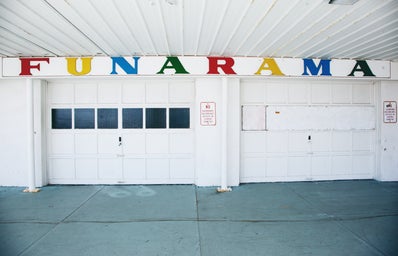Capturing the essence of the novel’s magic on-screen can be a difficult task. It is impossible to include every detail within the novel into a 90-minute movie or a mini-series, leaving a lot of crucial creative decisions of what to cut and what to keep. Sometimes a key detail from the novel is left out, and fans become angry about their expectations for the film after enjoying the print version so much.
When I first heard this summer that a Hulu mini-series was being made from John Green’s 2005 novel Looking For Alaska, I was conflicted. I read the book the summer before junior year of high school, and I was really captivated by Green’s writing. I remember I finished it within a few days, which is unusual for me, as I like to take my time with summer reading. However, the storyline was too gritty to not keep going. But I could not be sure if my attention could be held in the same way through a mini-series.
I also was not a fan of John Green’s two previous novel-to-movie adaptations, The Fault in Our Stars and Paper Towns. I was especially disappointed by TFIOS, as I was moved so deeply by the book, but only felt like I was watching a badly summarized version with the movie. I really wanted to like the movie, since I loved Shailene Woodley and Ansel Elgort, but their acting was not enough to make up for plotline holes.
Regardless of Green’s beautiful writing not being translated well on screen, I decided to give creator Josh Schwartz’s mini-series Looking For Alaska a chance, and I am happy I did. The show exceeded my expectations, and even though it had been over four years since I read the novel, I instantly was able to recognize key features of the novel within the first episode, including a great casting for each character, right down to the perfect backdrop for Culver Creek Academy.
But in case you still aren’t convinced, here are some reasons you should check out the series.
- Kristine Froseth Is the PERFECT Alaska
-
You may not be familiar with her name, but chances are you’ve definitely seen Kristine Froseth in the past year. She starred along Shannon Purser and Noah Centineo in Sierra Burgess is a Loser, she also stars currently as Kelly Aldrich in The Society. But, regardless of her performances in these past two works, I still thought her portrayal of Alaska Young was as close to what John Green intended.
Her intelligent, yet carefree approach to the role really made the series. Alaska had a deeply troubled past, and was a struggling alcoholic, and Froseth did not overdo the role of the flawed teenager to make it unbelievable, as my complaint would be about a lot of teen television. Often the actors and actresses seem too over the top to actually be relatable. Froseth really knocked it out of the park with this role, and she will be a name to watch in 2020.
- The Chemistry Between Alaska and Pudge
-
A central theme of Looking For Alaska centers on the relationship between the innocent and curious Pudge, and the mysterious and charming Alaska. Charlie Plummer, who plays Pudge (aka Miles Halter), and Froseth work wonderfully together to display the awkward, tumultuous, and admiration-filled relationship shared between the two.
I think the scenes of the two alone on campus over Thanksgiving were done well. Not too much time was spent on them, but enough to definitely convey Alaska’s growing feelings towards Pudge, who was in love with her at first sight.
- Mid-2000s Soundtrack State of Mind
-
It’s been 14 years since 2005, however the time period still seems fairly close in our minds. Therefore, unlike the 90s and the 80s, it can be hard to fully capture the magic of those in-between years of the 2000s. However, by hearing Gorrillaz’s “Feel Good Inc.,” Rilo Kiley’s “With Arms Outstretched,” and Jet’s “Are You Gonna Be My Girl,” I felt as though I was somewhere smack in the middle of the decade. I was pleased to see these choices included instead of original music or songs past the time frame.
Often when I read a work I put a mental soundtrack to certain scenes. I felt in this case, the song in the background of each scene worked nicely to capture the particular vibe Schwartz was going for and that honored Green’s intentions.
- The Debutante Scene
-
You may be racking your brain trying to remember this scene — well stop you’re searching, because it was not included in the book’s plot. The hilarious scene, which displays the Weekday Warriors in an unpleasant bathroom situation, adds depth to the complex nature of Sara and The Colonel’s (aka Chip Martin) relationship. Both Denny Love (The Colonel) and Landry Bender (Sara) do a great job of capturing the tension within the ill-fated romance.
No matter what The Colonel did, he would never be enough for Sara, a proud Weekday Warrior. Her father’s snub, along with a lack of intervention of her end, show the true classism Green was trying to convey in his novel. I think the scene put into perspective how difficult it was for students like the Colonel, who were trying to rise above their economic status, while still being held done by Southern elites.
- The Swan of Satan Brought to Life
-
The mini series even included the “spawn of Satan swan,” playfully nicknamed by The Colonel. This swan was an important part of the plot, as it established Pudge’s exposure to the war between the Weekday Warriors and the scholarship kids on campus, after he is almost is mauled by the bird.
While the mention of the swan with some sound effects would have been satisfactory, the fact the series incorporated the swan, not just in one scene, but multiple episodes, was above and beyond. The swan did not seem fake either and was definitely believable to be truly satanic. The bird’s appearance made for both humorous and somewhat terrifying scenes, and proved to be carefully thought out on Schwartz’s end.
- The Final Prank
-
Alaska Young was a master in the art of pranking, so in order to honor her memory, the students put on the ultimate prank of hiring a stripper as a speaker at Culver Creek’s Speaker Day. So, of course it was a key ending moment in the series. It’s the moment that the Weekday Warriors and Alaska’s friends set aside their differences to give her the proper send-off she deserves.
I like how Schwartz changed up the connection the students had to the stripper in the series. Instead of randomly hiring a local stripper, in the series Pudge and the Colonel ask the liquor store clerk, who Alaska was seen interacting with numerous times. It’s a nice connection to honor her memory, and the personal touch is something the viewers can hold onto, allowing the plot to come full circle. Plus the inclusion of him stripping to Kelis’s “Milkshake” was all too magical in a tribute that fictional Alaska would have been so very pleased to witness.
Going forward I think more adaptations should be made into mini-series. The eight or ten episode arc allows time to explore the plot for most of the crucial details, without the drawn out nature of multiple seasons. I was moved to tears watching the series, just as I had been reading the book, and the evoked emotion is proof to me that Green’s work was done justice.
So, definitely be sure to get some leftover Halloween candy, hot tea, and a box of tissues, and watch Hulu’s Looking For Alaska!
Want to keep up with HCBU? Make sure to like us on Facebook, follow us on Instagram, check out our Pinterest board, and read our latest Tweets!



